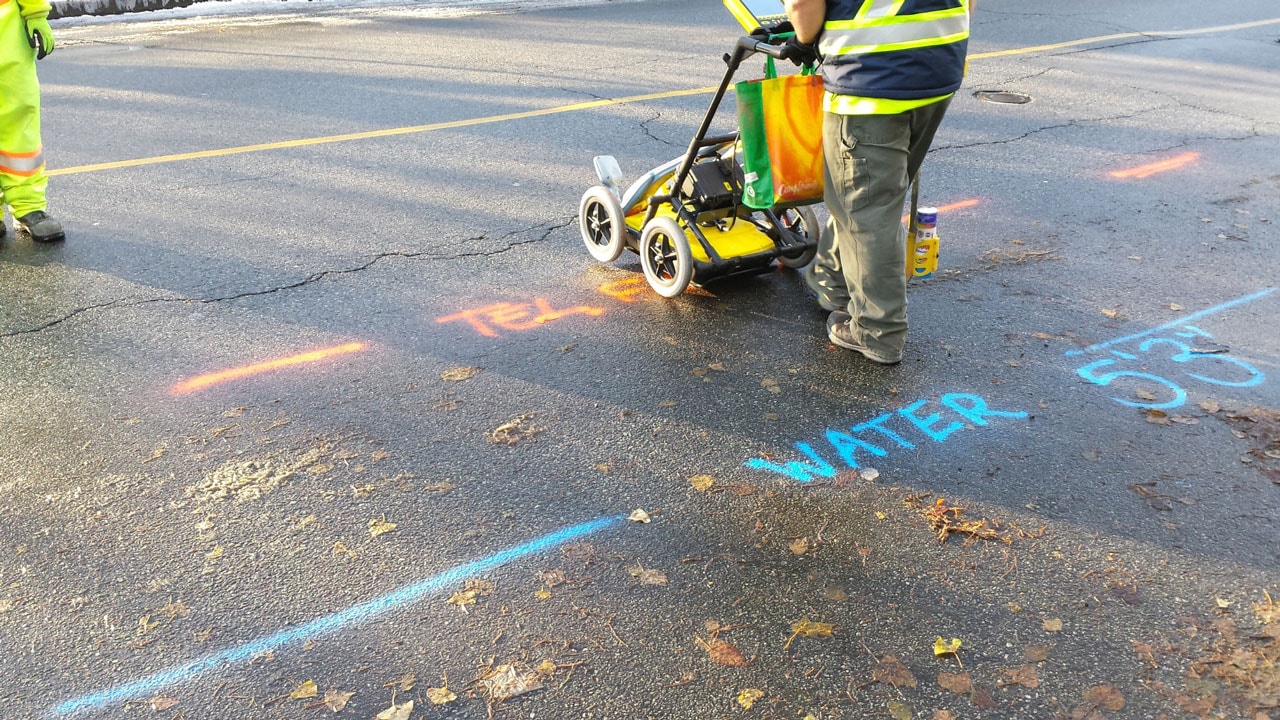Before going about any construction or excavation process, it is essential to conduct a utility surveying process. Ground penetrating radar (GPR) has become a common and widely used method to locate underground utilities.
This has many different benefits, and over time the technology has evolved to be more precise and efficient. Let’s have a closer look at what utility surveying is, and the differences between traditional methods and GPR.
What is Utility Surveying?
Utility surveying is the process of ensuring that no underground utility lines, such as water pipes and electricity lines, are present before excavating or constructing over a specified area.
Damage to these lines can cause some serious destruction, property damage, and complications while posing a health risk to workers. Utility surveying is an important process for any excavation or construction project so that the task can be completed without complications.
Benefits of Utility Surveying
There are many benefits to utility surveying. Some of these benefits include:
- Less risk of soil disturbances
- Fewer project delays
- Easier and more informed decision-making
- Lowered risk of personal injury
- Minimized monetary loss from construction projects and excavation sites.
These benefits are great to keep in mind as it assists not only in lowering the overall risk of unforeseen costs but also the threat of injury while working on the site.
Different Types of Utility Surveying
A utility surveying company will often employ various different methods to detect subsurface utilities. These methods can include GPR, potholing, or dowsing. Having a good understanding of each will assist you in choosing the right one for your project.
Ground Penetration Radar
GPR is used for subsurface utility line locating. This method uses high-frequency radio wave pulses that are emitted into the ground and bounce off covered facilities. When these waves deflect, they return back to the operator who gets a good understanding of where the utilities may be hidden.
Some of the limitations that GPR may have include factors such as soil density, distance, and soil type. GPR is commonly used alongside electromagnetic (EM) locating which makes up for any disadvantages that it has.
Traditional Methods
The traditional methods of utility locating include potholing and dowsing. Potholing is a process of using a high-pressure vacuum excavation device to break the soil and reveal the utilities. Dowsing is a process in which dowsing rods are inserted into the ground in an attempt to locate hidden utilities.
GPR or Traditional?
While the traditional methods are reliable, GPR proves to be more efficient. With GPR and EM, lines are more accurately found with little to no ground disturbances. This makes the task far easier whilst also receiving accurate indications of where the utilities may be.
Get the Right Ground Penetrating Radar Service for the Job
Getting the right assistance for the task is an essential tool for any construction and excavation project.
Without help from a professional team of expert surveyors like Util-Locate, a site could have many disturbances that affect the overall productivity and efficiency of its workers.
Get in touch with our team and receive industry-leading utility locating and ground-penetrating radar services that efficiently uncover your hidden utilities. Contact us at 888-885-6228 at Util-Locate today!

